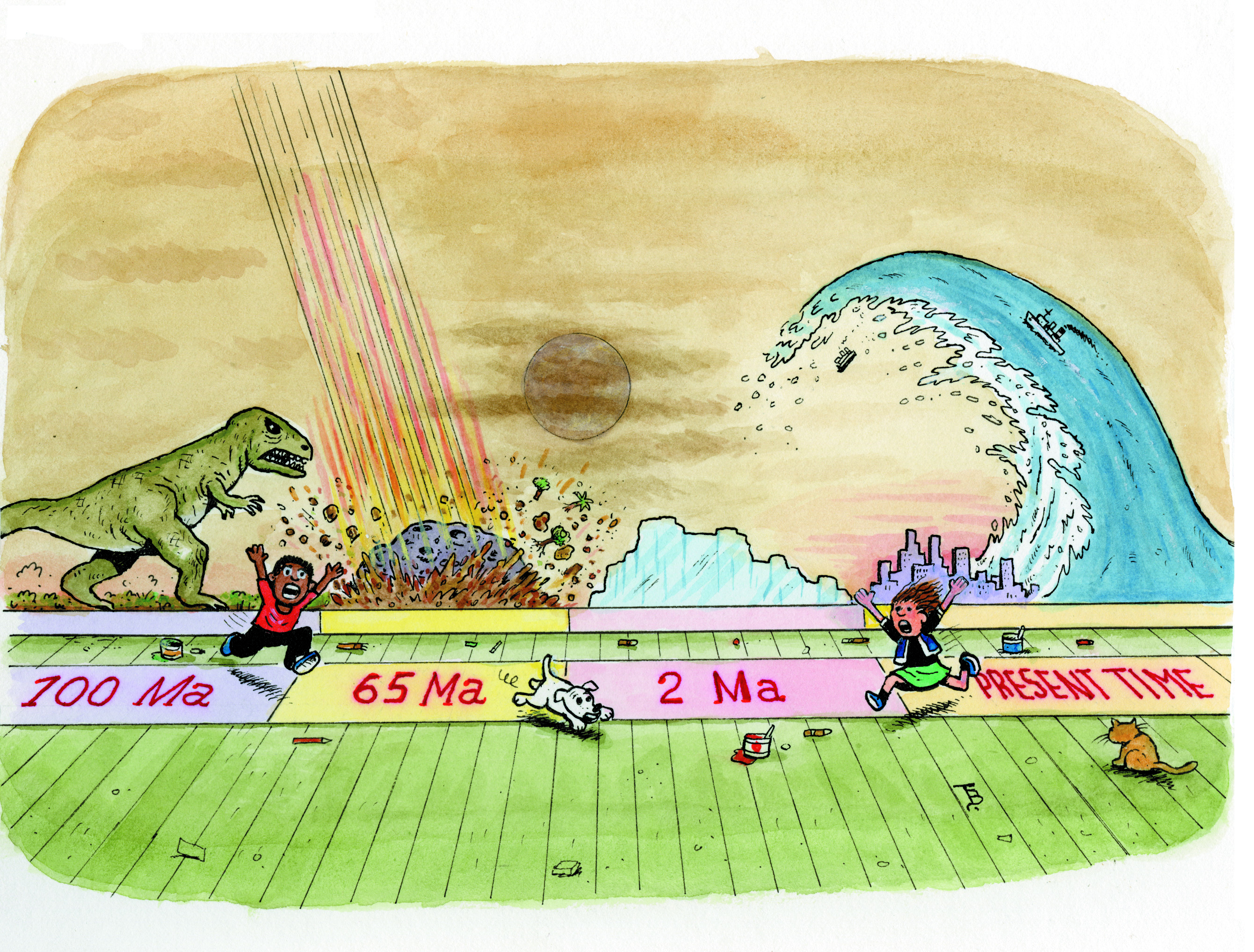
Overview
In this section you will find materials that support the implementation of EarthComm, Section 5: Geologic Time.
Learning Outcomes
- Develop a model of geologic time using a number of major events in Earth's history.
- Carry out an investigation to explore the geologic time scale and the use of the biosphere to divide geologic time.
- Use a model to explain how radioactive decay can be used to determine the age of a rock.
Inquiring Further
- To learn more about the development of the geologic time scale, visit the following web sites:
The Geologic Time Scale in Historical Perspective, University of California Museum of Paleontology
Provides a basic history of the contributions made to the geologic time scale.
Geologic Time Chart History, Idaho Museum of Natural History
Explains how the geologic time scale was not developed in sequential order, but as early geologists identified the layers of rock and the fossils captured within them.
- To learn more about how scientists find the absolute ages of rocks, visit the following web sites:
Geochronology, USGS
Provides an overview of selected methods used by USGS scientists for dating and determining the time sequence of events in the rock record.
Absolute Age, Brooklyn College
Describes methods for making quantitative estimates of the number of years ago an event occurred.
Geochronology: Methods, USGS
In-depth descriptions of methods for determining the absolute ages of rocks and sediments.
Resources
To learn more about this topic, visit the following web sites:
The Geologic Time Scale
Geologic History, The Virtual Fossil Museum
Looks at the geologic time scale and major events that occurred in different periods.
Geologic Time, USGS
Overview of geologic time, the geologic time scale, and how geologic events are dated.
What is Geologic Time?, National Park Service
Examines subdivisions of geologic time. Includes time scales that are drawn to scale in order to compare the relative lengths of geologic time divisions.
Geologic Timeline, San Diego Natural History Museum
In-depth descriptions of common life forms present in the subdivisions of geologic time.
Dating Rocks Using Radioactive Decay
Radiometric Time Scale, USGS
Looks at the discovery and research of radioactive decay and describes how the process works.
How do geologists date rocks? Radiometric dating!, USGS
Examines radioactive decay as a technique for determining the age of rocks and geological events and processes.
How Do Geologists Know How Old a Rock Is?, Utah Geological Survey
Looks at relative dating and absolute dating techniques, including radioactive decay.
Physics of Radiometric Dating, Tulane University
Principles of absolute dating techniques using radioactive decay. Includes examples of isotope systems used to date geologic materials.
